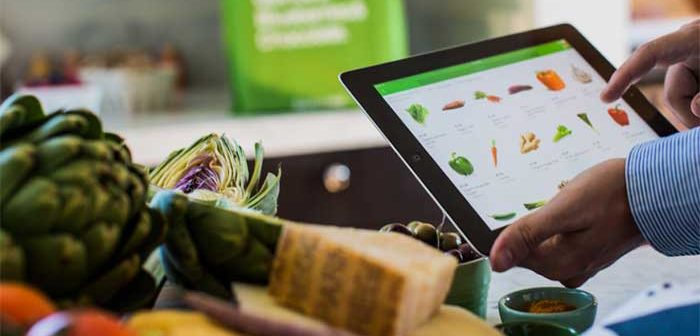The landscape of grocery shopping market in India has undergone a transformative shift with the emergence and rapid growth of online grocery apps. These platforms offer convenience, a wide range of choices, and swift delivery services, revolutionizing the way people shop for daily essentials.
Evolution of Online Grocery Apps
The proliferation of smartphones and improved internet connectivity has played a pivotal role in the rise of online grocery apps in India. These apps capitalize on the growing digital ecosystem, catering to the evolving needs and preferences of consumers seeking convenience and time-saving solutions.
Market Expansion and Adoption
The online grocery sector in India has witnessed exponential growth, fueled by several factors:
Changing Consumer Behavior: Increasing urbanization, busy lifestyles, and the desire for convenience have driven consumers towards online platforms. The COVID-19 pandemic further accelerated the adoption of online grocery shopping due to safety concerns and movement restrictions.
Expanding Internet Penetration: India’s robust digital infrastructure and rising internet penetration, especially in tier 2 and tier 3 cities, have facilitated broader access to online grocery apps, reaching a larger consumer base.
Diverse Offerings and Services: Online grocery apps offer a comprehensive selection of products, including fresh produce, pantry staples, personal care items, and more. Additionally, many platforms provide various delivery options, including express delivery within hours of ordering.
Key Players and Competitive Landscape
Several prominent online grocery apps have carved their niche in the Indian market, intensifying competition and driving innovation:
Big Players: Platforms like BigBasket, Blimkit (now part of a big group, LioMart, Zepto,StarKwik and Amazon Pantry have established themselves as major players, offering a wide assortment of products, reliable delivery, and competitive pricing.
Entrance of E-commerce Giants: E-commerce giants like Amazon and Flipkart have expanded their offerings to include groceries, leveraging their existing customer base, logistics infrastructure, and technological prowess to capture a share of the market.
Local and Regional Players: Additionally, regional players and local grocery chains have also ventured into the online space, capitalizing on their understanding of local preferences and efficient supply chains.
Challenges and Future Outlook
While the growth trajectory of online grocery apps in India remains promising, certain challenges persist:
Last-mile Logistics: Ensuring timely and efficient delivery, especially in densely populated urban areas, remains a logistical challenge for these platforms.
Quality Control: Maintaining the quality and freshness of perishable items, such as fruits and vegetables, during transit and delivery is a constant concern.
Competition and Profitability: The sector’s competitive nature and the need for aggressive pricing strategies pose challenges for profitability, leading some platforms to focus on scaling operations and customer acquisition.
Looking ahead, the online grocery sector in India is poised for continued expansion. Advancements in technology, including AI-driven inventory management and efficient delivery systems, will further streamline operations. Moreover, partnerships with local vendors and increased focus on customer experience are likely to drive growth and sustainability for these platforms.
In conclusion, the proliferation of online grocery apps offering quick delivery services has reshaped the Indian retail landscape. These platforms have gained widespread acceptance by offering convenience, diverse product offerings, and efficient delivery, catering to the evolving needs of Indian consumers seeking hassle-free shopping experiences.




